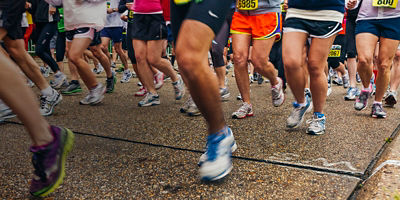
Watches are no longer just a tool for telling time. The amount and types of data you can track on your wrist alone is more comprehensive than ever. However, what you decide to wear when you run can be as simple as, well, nothing (plenty of runners run watch-free). Or, your watch can double as a connected mini computer with GPS, altimeter, and monitors for heart rate as well as a slew of other data collection points. Narrow down the best watch option for your next run.
First, Ask These Questions
How “connected” do you want to be? Do you want to receive text, email, and phone messages while running?
If so, shop for a smartwatch.
How much data do you want? Looking for metrics like pace and distance? Or want all the metrics, like heart rate, stride cadence, sleep patterns, and more?
Start with GPS-enabled watches and scan lists of features (like the ability to read heart rate).
How big a device do you want on your wrist?
Know that some are designed to be sleek, while others are larger to house more tech.
How important is battery life?
Battery life is more critical for ultrarunners and long-course triathletes—or regular runners not wanting to charge every day.
Do you want your watch to connect to apps and stream music?
Diehard fans of working out with music, or folks wanting access to apps—whether it’s running to a playlist, or tracking runs for sharing on social networks—will need to look for more tech-laden, and often pricier smartwatch options.
Will you be running with this watch through winter, where you might be wearing gloves?
Consider a watch with actual buttons, versus a touchscreen (though there are gloves with touchscreen-friendly fingertips).















